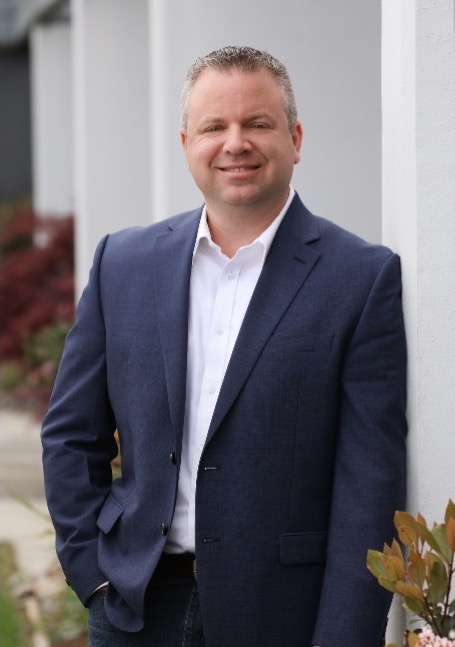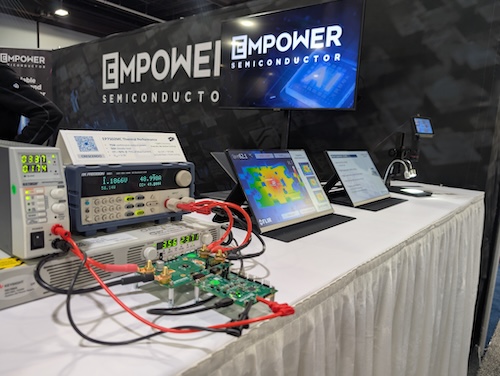Empower Semiconductor is a company that is aiming to solve fundamental problems in power delivery for data-intensive applications. Pulse 2.0 interviewed Empower Semiconductor founder and CEO Tim Phillips to gain a deeper understanding of the company.
Tim Phillips’ Background

Could you tell me more about your background? Phillips said:
“Certainly. I’ve spent over three decades in the semiconductor industry building innovative power management businesses. After I received my BSEE, I started my career out as a mixed signal power IC designer and then moved up through the applications and product marketing ranks at Cherry Semiconductor, which then was acquired by ON Semiconductor. I left ON in 2001 to join International Rectifier (IR) where I held various roles, including heading global FAE’s, running Marketing & Applications for a $500M business unit focused on the Computing & Communications markets, running corporate marketing, investor relations and corporate development, where I divested IR’s non-Focus discrete business and acquired a digital power management company, CHiL Semiconductor. I also founded the Enterprise Power Business unit in my last role at IR, focusing on High Performance Computing and capturing #1 market share in processor power in the data center. That experience led me to found Empower Semiconductor in 2014, where I am CEO. My passion is solving customer and industry problems and developing novel products, so starting a company has always been my dream.”
Formation Of The Company
How did the idea for the company come together? Phillips shared:
“Gene Sheridan, Empower’s chairman, David Lidsky (Volterra co-founder), and I founded Empower with the clear mission to shrink the size and complexity of power supplies, while increasing system efficiency. It was clear to us that data center processors would increase the density requirement on the power supply higher than the technology available could handle. An entirely new approach and technology was needed, and we set out to break the power speed barrier by >100x so that we could shrink, eliminate and integrate all passives in the system to reduce the size of the power supply by 5-10x. We call our technology FinFast™, as we use the same silicon tech (deep submicron FinFETs) as the processor we are powering. While we didn’t know it at the time, artificial intelligence (AI) has become the perfect application for our technology, which is enabling AI’s performance roadmap, as current density is a key bottleneck for the system.”
Favorite Memory
What has been your favorite memory working for the company so far? Phillips reflected:
“There are many to choose from and it’s difficult to single out one event over the others.”
“Certainly, seeing Crescendo, our latest generation device, successfully power up is the most vivid one right now; this was a critical step rewarding a few intense years of efforts by the whole team. But it will likely be eclipsed later this year by our first customer product powered by Crescendo officially on the market. Of course, there are unforgettable moments along the way — founding the company around a shared vision, receiving that very first purchase order that validated our idea, and the pivotal moment when investors trusted us with their capital to bring our technology to life. Each of these milestones shaped who we are and built the foundation for where we’re heading next.”
Core Products
What are the company’s core products and features? Phillips explained:
“We are focused almost entirely on solving the massive power delivery bottleneck that AI and high-performance computing (HPC) processors are creating in the data center space.”
“Our product portfolio consists of several generations of integrated voltage regulator (IVR) and ECAP devices that customers can choose from based on their application requirements.”
“Our IVR product line offers fully programmable step-down solutions that range from several tens of watts to kilowatts. These solutions have the ability to be deployed anywhere in the system: from embedding the power converters onto a substrate for a chiplet architecture to traditional board-level mounting to now — true vertical power and backside mounting.”
“Our silicon capacitors line, or ECAPs, has similar flexibility with solutions for printed circuit board (PCB) mounting and substrate embedding. For all of our offerings, we also have the ability to modify or custom design solutions to fit a certain form factor, performance level or specific implementation. Our main differentiation revolves around our FinFast technology; at its core is our ability to move power, currents, and voltages at speeds that are significantly faster than industry standards in power management.”

Challenges Faced
Have you faced any challenges in your sector of work recently (and how did you overcome those challenges)? Phillips acknowledged:
Technical hurdles are almost expected; it’s part of the innovation process, but we are well-equipped to navigate through those hurdles. What’s often harder is managing external pressures: supply chain disruptions, tariff barrier,s and dealing with shifting trade policies that can limit market access or component availability. Pushing through these challenges requires agility, strong partnerships, and the ability to pivot quickly while staying focused on long-term goals.
Evolution Of The Company’s Technology
How has the company’s technology evolved since launching? Phillips noted:
“Today, Empower Semiconductor powers the AI revolution with our FinFast technology. Our true vertical power platform, Crescendo, delivers kilowatt range on-demand scalable power with the speed, precision and signal integrity required by AI processors. Our power-management architecture shrinks solution footprint, height and component count, achieving vertical power delivery (VPD) with unprecedented power density and efficiency. In parallel, our silicon capacitor technology enables advance AI processors to achieve a higher level of power integrity with virtually one high-density, high-performance capacitive device, saving space and easing the routing underneath the processor’s hundreds of I/O and power bumps.”
“Nevertheless, before achieving what we consider today’s benchmark in powering AI and HPC processors, we set off to build and prove our technology step by step, refining our architecture and techniques with each product generations. Our first two generations of products proved we could successfully operate at high switching frequency, embed and integrate all power components into a single, compact device and eliminate most of the typical capacitance requirements thanks to our wide bandwidth. We were also able to expand the voltage and current range of our products with each generation, making them suitable for a wider range of applications and system architectures.”
Significant Milestones

What have been some of the company’s most significant milestones? Phillips cited:
“Let’s start at the beginning with our founding. Everything originated from there and we have now shown that we were able to execute on that original vision. After a few years developing our IP library, we managed to demonstrate a full IVR system with integrated capacitors and magnetics and this led to a pivotal step when we productized our IP in 2020. The first commercial product shipment is obviously noteworthy as well, validating our technology and business model. The last major breakthrough came with the development of our FinFast technology and Crescendo platform; this truly set us apart from all other power management companies.”
Customer Success Stories
When asking Phillips about customer success stories, he highlighted:
“Most, if not all, designs and activities we are involved with tend to remain confidential. When it comes to power management, our products provide an edge to our customers, be it a smaller, more efficient or simply better performance solution. They tend to want to keep that edge over their own competition for as long as possible. One that I can disclose however, as we have been “uncovered” so to speak, is our involvement with Xiaomi in their latest 15 S-Pro Smartphone which launched mid-June in China. We supply the silicon capacitors that ensure the power integrity of the phone’s Xring O1 processor. We have also publicly disclosed our cooperation with Marvell on developing the next generation of integrated power delivery solutions for AI and Cloud platforms, which is a great recognition of our vertical power technology. And more specifically on the latter, we will announce later in the year some significant achievements with leading hyperscalers.”
Revenue/Funding
Are you able to discuss funding and/or revenue metrics? Phillips revealed:
“We have announced some of our prior funding rounds publicly, namely $30M in Q1 2023 and $45M in Q4 2021. It is no secret that we are currently fundraising, and we recently announced the closure of more than $140M in Series D financing. We are fortunate to be right in the middle of providing one of the few key AI enabling technologies — performance power management, where our fast-expanding content is sold into an escalating unit market, leading to exponential revenue growth opportunities. While we are in revenue and in high growth mode, we do not share those numbers publicly.”
Total Addressable Market
What total addressable market (TAM) size is the company pursuing? Phillips assessed:
“We estimate our serviceable addressable market to be at about $12 billion. And this is new annual market opportunity driven by the explosive growth and rapid adoption of kilowatt-class AI chipsets. The unprecedented levels of power they demand is creating an urgent need for faster, more efficient and highly scalable power delivery solutions; an area where Empower is uniquely positioned to lead.”
Differentiation From The Competition
What differentiates the company from its competition? Phillips affirmed:
“At Empower, we recognized early that delivering a truly breakthrough power solution required combining and optimizing all aspects of power management — not just one or two. This was no simple task and took years of development and numerous patents to achieve — we now have 116 patents awarded or pending. Traditional solutions tend to improve isolated elements, like process or packaging, but they’re ultimately limited by their weakest link. The team of experts we assembled has been looking across all disciplines to make a better power delivery solution. Our Finfast technology was born from this initiative. It is built on five key pillars and achieves benchmark efficiency at blazing speed:
- Innovative architectures and control techniques: Essential for achieving high-frequency regulation at the speeds we target.
- FinFET power devices: We are the first to use deep submicron FinFET processes for power supplies, adapting them — through unique IP — for high-current, high-bandwidth operation.
- High-frequency magnetics: We broke long-standing industry barriers by developing our own high-performance, high-frequency magnetics.
- Wide-bandwidth silicon capacitors: Our custom silicon capacitors offer extremely low parasitics, enabling the wide bandwidth needed to handle fast load changes.
- Thermally optimized packaging: Our compact, ultra-thin packages deliver exceptional thermal performance at high frequencies.
This fully integrated, holistic approach is what sets FinFast and Empower apart from the competition.”
Future Company Goals
What are some of the future company goals / what are your exit plans? Phillips concluded:
“Looking ahead, our focus is simple: we’re committed to building great products that truly excite our customers and to driving a high-growth, sustainable business. I firmly believe that when you do those two things well, incredible opportunities naturally follow. For us, an exit isn’t the goal — it’s just a potential milestone along the journey. We have built Empower to make an impact.”


